Ellen Lloyd – AncientPages.com – If you haven’t seen these remarkable ancient figures before, prepare yourself for a surprise.
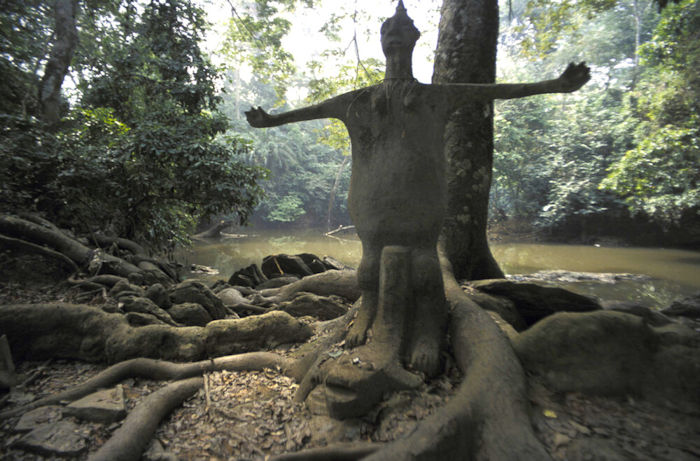
Credit: Thierry Joffroy – CRA-terre
Hidden in the dense forest of the Osun Sacred Grove, we encounter many ancient, very puzzling odd-looking figures with huge eyes and strange features. Who were these beings? Where did they come from, and what happened to them?
The early history of Osogbo is considered an account of the legendary encounter between men and spirits or fairies, both involved in an attempt to win control of Osogbo land.
Located on the outskirts of the city of Osogbo, in southern Nigeria, we find the dense forest of the Osun Sacred Grove. This amazing place is regarded as the abode of the goddess of fertility Oshun, one of the pantheon of Yoruba gods.
Oshun shares many similarities with the Egyptian goddess Isis. The goddess Oshun was not only the goddess of beauty and love. She also brought the teaching of divinations, mysticism, agriculture, and culture to humans.
Isis used to be represented as the mother of the fishes and the Queen of the seas. She is known as the mother of the fishes of the seas and the birds of the forest. Oshun was also the protector of the poor, the mother of all orphans, and the one who brought them what they needed in this life through periods of weakness or strength.
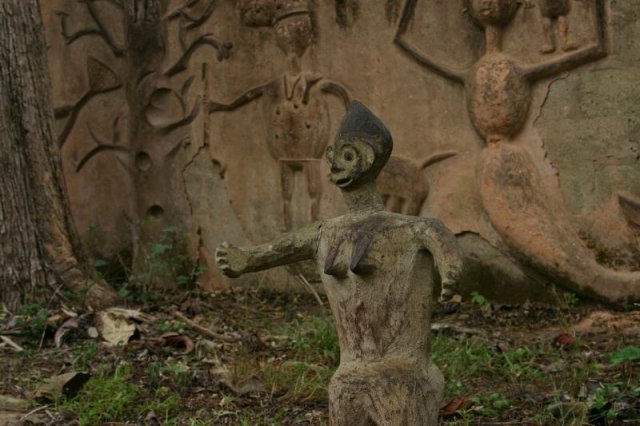
Credit: Thierry Joffroy, UNESCO
A century ago, there were many sacred groves in Yorubaland: every town had one. Most of these groves have now been abandoned or have shrunk to relatively small areas.
Osun-Osogbo, in the heart of Osogbo, the capital of Osun State, founded some 400 years ago in southwest Nigeria, at a distance of 250 km from Lagos, is the largest sacred Grove to have survived and one that is still revered.
The dense forest of the Osun Sacred Grove is some of the last remnants of the primary high forests in southern Nigeria.
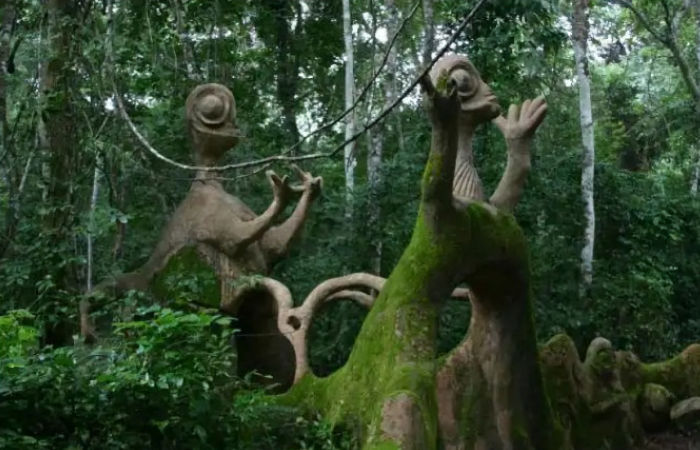
Credit: Auskid1215 – CC BY-SA 4.0
Through the forest meanders the river Osun, the spiritual abode of the river goddess Osun. Set within the forest sanctuary are forty shrines, sculptures, and artworks erected in honor of Osun and other Yoruba deities, many created in the past forty years, two palaces, five sacred places, and nine worship points strung along the river banks with designated priests and priestesses.
Osogbo is now unique in having a large component of 20th-century sculpture created to reinforce the links between people and the Yoruba pantheon and the way in which Yoruba towns linked their establishment and growth to the spirits of the forest.
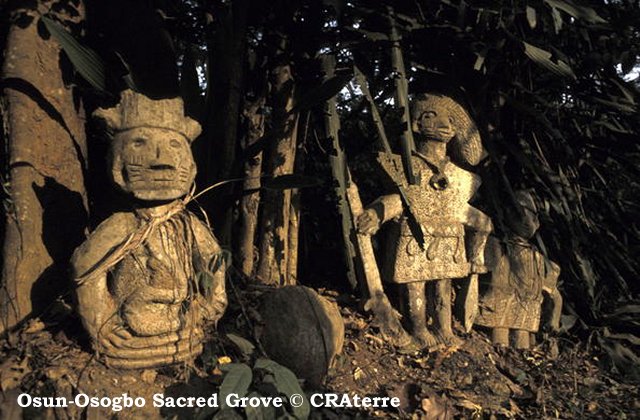
Credit: Thierry Joffroy – CRA-terre
The restoration of the Grove by artists has given the Grove new importance: it has become a sacred place for the whole of Yorubaland and a symbol of idenтιтy for the wider Yoruba Diaspora.
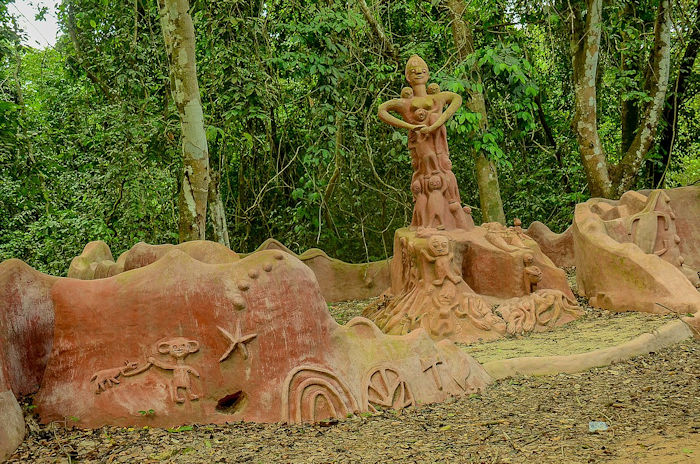
Credit: Oloyedejuwonlo – CC BY-SA 4.0
The Grove is an active religious site where daily, weekly and monthly worship takes place. In addition, an annual processional festival to re-establish the mystic bonds between the goddess and the people of the town occurs every year over twelve days in July and August and thus sustains the living cultural traditions of the Yoruba people.
Updated on Nov 25, 2023
Written by Ellen Lloyd – AncientPages.com
Copyright © AncientPages.com All rights reserved. This material may not be published, broadcast, rewritten or redistributed in whole or part without the express written permission of AncientPages.com
Expand for references
References:
NCMM





